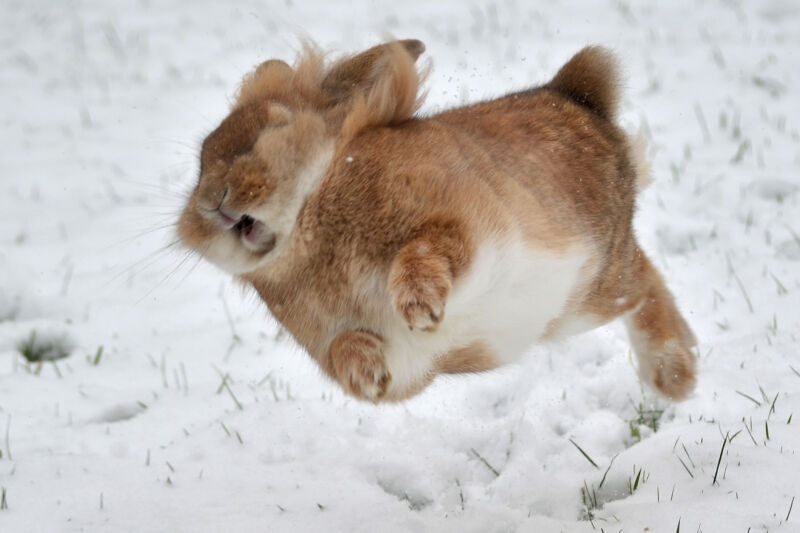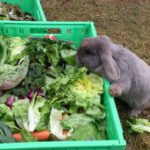Contents
- Fit and Happy During Winter
- How to Help Rabbits Get Through the Cold Season
- Which rabbits are suited for outdoor life in winter?
- Can a rabbit be kept alone outdoors during winter?
- Can all breeds spend the winter outdoors?
- Which rabbits are not suited for living outdoors in winter?
- Is it useful and necessary to gradually accustom them to low temperatures?
- Should my rabbit be taken indoors if it suddenly falls ill in winter?
- What requirements must the enclosure meet if my rabbits are to spend winter outdoors?
- How to prepare the rabbit shelter for winter
- Suitable enclosures for winter
- What should be given special attention in daily care during winter?
- Extremely low temperatures: How many degrees below zero can rabbits tolerate?
- How do I know if my rabbits are cold?
- Can rabbits spend the winter in the garage or basement?
- Heating the rabbit shelter
- Tips to prevent freezing:
Fit and Happy During Winter
How to Help Rabbits Get Through the Cold Season
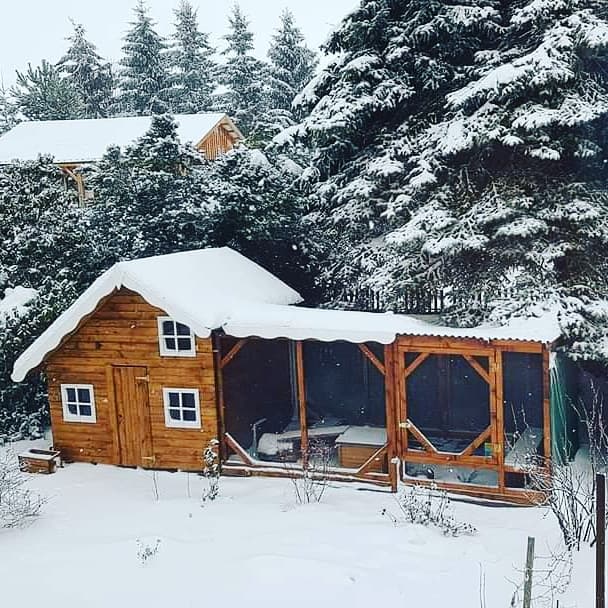
With good preparation, living outdoors in winter is no problem for rabbits. They don’t hibernate and, in fact, usually cope better with snow and frost than with summer heat.
When the first leaves fall and nights start getting colder, it’s time to think about what rabbits need during winter and how we can provide it.
Which rabbits are suited for outdoor life in winter?
Most rabbits – though not all – can live outdoors in winter. In general, they should be healthy and in good condition. Even young rabbits can usually get through the cold months in the garden without issues.
Rabbits that are weak are not suited for outdoor life in winter. This includes very old animals, those with chronic illnesses who aren’t in good shape, and very young kits still in the nest, who are at high risk of sudden death from cold.
Can a rabbit be kept alone outdoors during winter?
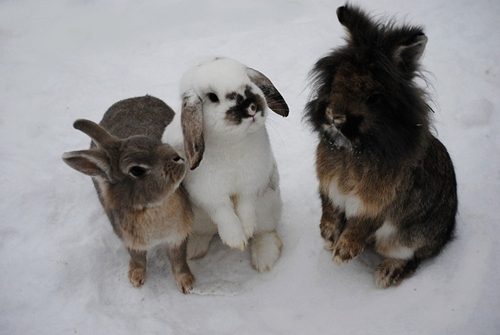
Especially in winter, it’s essential for a rabbit to have the company of its own kind. By cuddling together, rabbits keep themselves warm, and their hutch also stays warmer thanks to shared body heat. In addition, two rabbits are far more active than one alone.
Why does my rabbit need another rabbit?
Can all breeds spend the winter outdoors?
In principle, all rabbit breeds are suited for outdoor life, although in some cases special precautions are necessary. Some breeds are particularly sensitive to the weather (for example, long-haired rabbits, some Lionheads, and Rex rabbits). Because of the specific structure of their fur, they have more difficulty retaining body heat and lack the dense topcoat that normally repels water and snow.
For this reason, these rabbits should be kept in a enclosure with a roof and protection against moisture on several sides. Outdoor exercise areas are not a problem, even in snow or rain, as long as the animals can return at any time to their sheltered area.
Long-haired rabbits should not have their entire coat clipped, but trimming is advisable so their fur does not restrict movement. It should also not drag along the ground. For them, a clean surface is recommended—stone slabs rather than sand or soil.
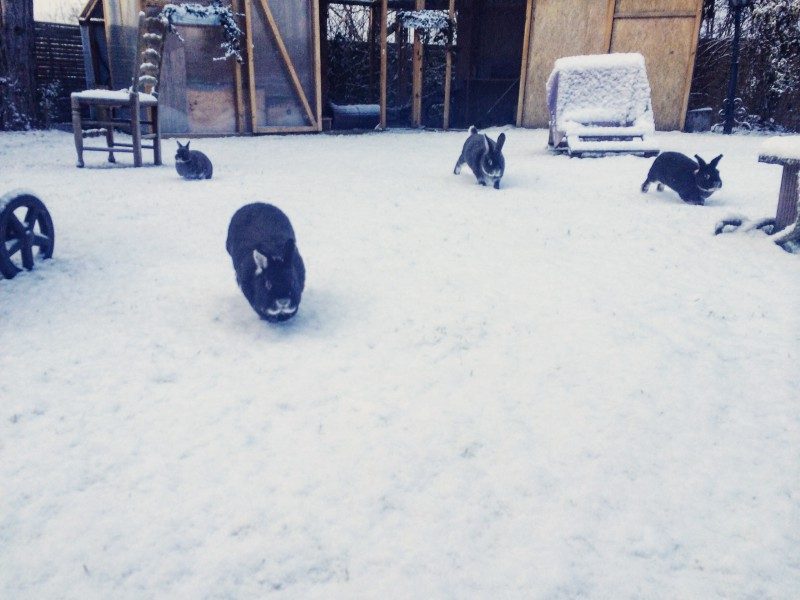
Which rabbits are not suited for living outdoors in winter?
Rabbits with chronic illnesses cannot handle cold or frost. Even if they sometimes manage for a while, it is risky if their health condition worsens. Very old rabbits or kits still in the nest are also in danger of dying from the cold.
Of course, much depends on the rabbit’s condition, the specific illness, the type of enclosure, and the region. For example, in southern Germany winter temperatures are much lower than in the north. With the right enclosure, rabbits can still live outdoors year-round.
In any case, the enclosure must be adapted to regional temperatures, and the animals must be closely monitored to avoid risks.
Is it useful and necessary to gradually accustom them to low temperatures?
Yes. To avoid overburdening the body and to prevent death from cold, a slow adaptation to outdoor life is essential. This can be done during summer or autumn by moving the rabbit outdoors by late September or early October. Another method is step-by-step habituation: gradually lowering the indoor temperature (first by keeping windows open during the day, later also at night), letting the rabbit outside for a few hours a day, then for the whole day and bringing it in at night, until finally leaving it outside permanently.
Should my rabbit be taken indoors if it suddenly falls ill in winter?
If a rabbit suddenly weakens during winter due to illness, it’s not always advisable to bring it straight into the house. The temperature difference puts unnecessary strain on the already weakened body. If the rabbit is only temporarily weak, it should be placed in a frost-free but still cool area (laundry room, basement, unheated room) until it recovers.
If the rabbit suffers from hypothermia (for example, due to digestive problems or after surgery), then it should indeed be moved to a warm place until it can stabilize its body temperature again. Afterwards, it can gradually be returned outdoors: first to a frost-free but cool space (garage, basement, unheated room), and then back outside during a milder weather phase.
Separating a rabbit from its group causes great stress, so unless the illness is highly contagious, this should be avoided. The sick rabbit can be moved together with its group or at least one companion to a frost-free area. This prevents the stressful process of re-socialization later.
Many illnesses, if treated in time, do not lead to severe weakness, allowing the rabbit to remain in its usual outdoor environment. For those without access to a frost-free indoor space, a garden shed or children’s playhouse with heating can be placed inside the enclosure, or alternatively, a bathroom with the heating turned off and frequent ventilation can be used.
What requirements must the enclosure meet if my rabbits are to spend winter outdoors?
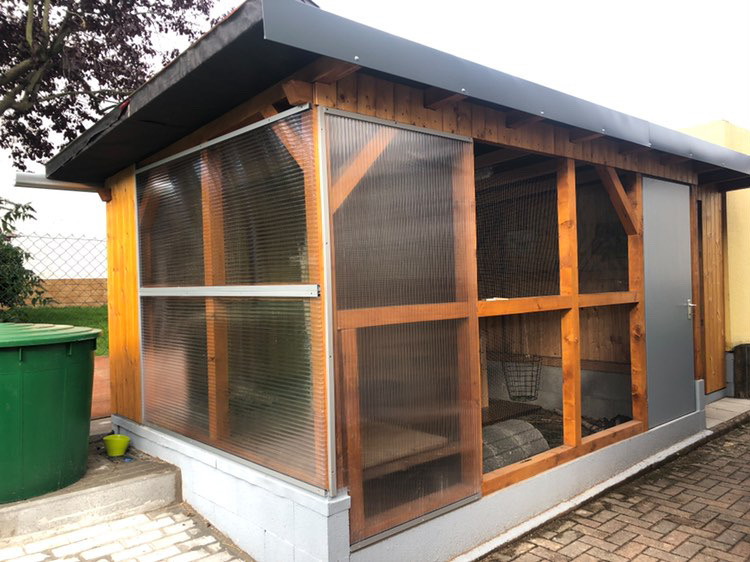
To give rabbits a cozy home during winter, the enclosure must meet certain basic requirements that make a comfortable winter life possible.
Minimum space: plenty of room for natural movement
Only active rabbits stay fit during the winter! It’s like children building snowmen and playing outside: if they were forced to sit still in a chair in the cold for hours, they’d quickly freeze. That’s why a marten-proof enclosure with at least six square meters of free space for two rabbits is essential. In addition, it’s recommended to give them free access to the garden or a fenced-off area during the day, so all rabbits remain active and in good shape.
Protecting the enclosure from bad weather: a sheltered area against rain, wind, and snow
The enclosure must include at least one space that is completely protected from the elements. This can be done by adding a roof and closing off the most exposed sides.
A shelter – preparing the rabbit refuge for winter
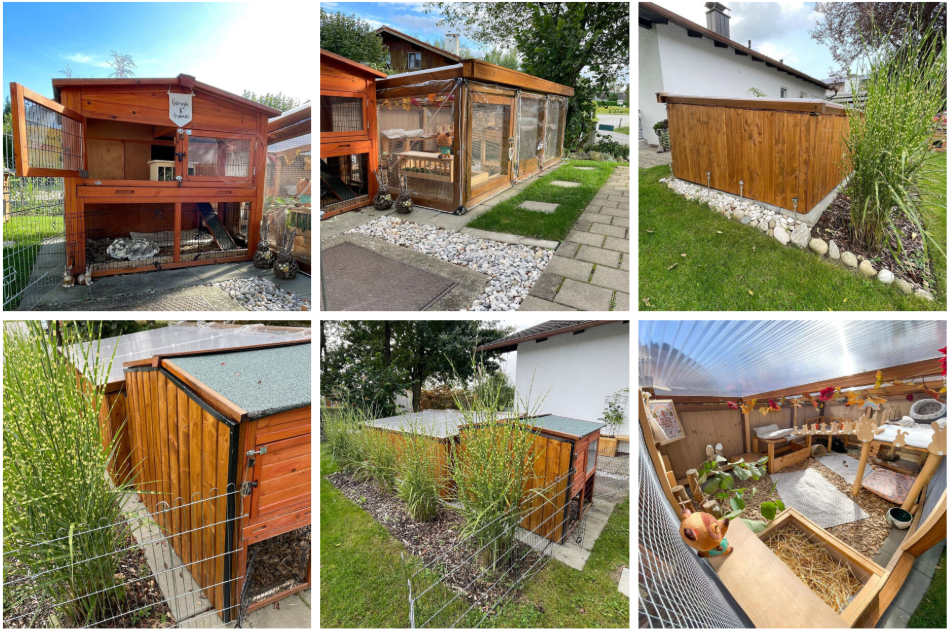
It is absolutely necessary to have a shelter where rabbits are fully protected from wind, rain, drafts, and snow, and which they can also “heat up” with their own body temperature. For them to warm it quickly, the shelter should be small, but still large enough for the rabbits to lie down, eat, drink, and sleep comfortably. The ideal size therefore depends on the size of the rabbits; in large groups, several small shelters are recommended.
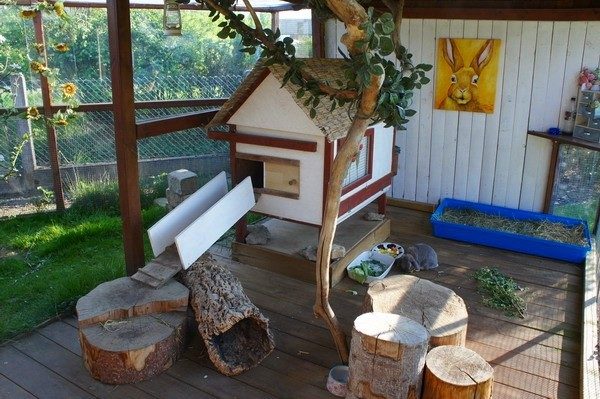
Commercial hutches are suitable as shelters, but only if adapted (roof, back wall, etc.), since many sold on the market are too drafty, not predator-proof, and deteriorate quickly.
Also ideal are solid wooden shelters made at home, adapted wooden chests, as well as children’s playhouses or garden sheds. Cat houses are also highly recommended, as they are usually well designed and sturdily built.
How to prepare the rabbit shelter for winter

Is insulation necessary?
Strict insulation is not necessary, since rabbits are hardly sensitive to cold; heat affects them much more. What truly matters is protection from moisture and drafts. This can be achieved with a solid wooden shelter that is completely wind- and waterproof, and that is regularly cleaned with absorbent bedding to prevent moisture from building up inside.
Additional insulation can be added, for example, by placing the shelter on a polystyrene base to block ground frost. Insulating the walls can also be useful.
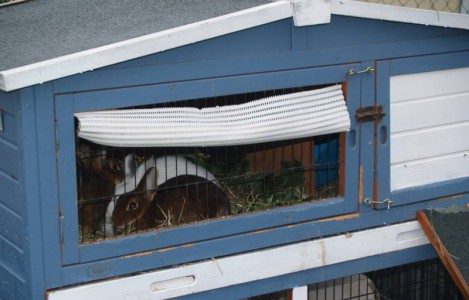
Wall insulation structure:
Layers: wood – insulating material – wood.
Even better: waterproof cladding – outer wooden wall – insulating material – vapor barrier – inner wall.
Insulating materials differ in effectiveness; you can compare the R-value to see which insulates best and what thickness is required. Some examples:
- Polystyrene (Styrofoam): not breathable; requires good ventilation to avoid condensation and mold. Must not be gnawed (toxic), not eco-friendly, cheap, not very flexible to install.
- Straw: eco-friendly, safe to gnaw, cheap, breathable, flexible.
- Cork: eco-friendly, relatively rigid, safe to gnaw, expensive, breathable.
- Flax fiber (linen): eco-friendly, safe to gnaw, medium price, breathable, flexible.
- Sheep’s wool: eco-friendly, must not be gnawed, breathable, flexible.
- Hemp mats: eco-friendly, safe to gnaw, medium price, breathable, flexible.
- Coconut mats: eco-friendly, safe to gnaw, medium price, breathable, flexible.
Suitable enclosures for winter
A solid wooden hut, a garden shed, or a children’s playhouse connected to a permanent, marten-proof enclosure with at least 6 m² for two rabbits is suitable for wintering if the following conditions are met:
- At least two rabbits are kept together.
- There is a spacious area protected from the weather (roof and closed-off side facing the wind), or a garden shed/children’s playhouse is available.
What should be given special attention in daily care during winter?
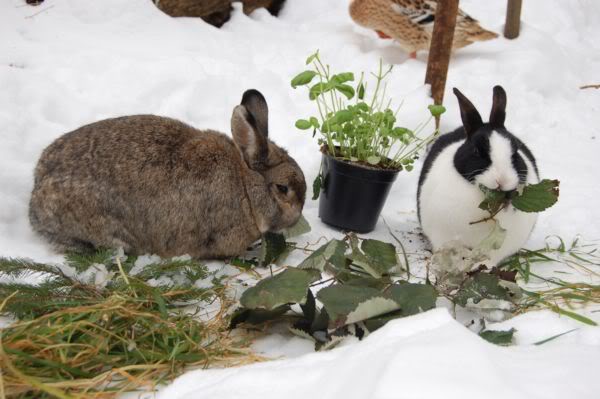
- Warm, insulating bedding: The shelter and other resting areas should be generously filled with fresh, absorbent, insulating bedding. Some rabbits also enjoy when the shelter is packed with hay, as they use it to build a cozy nest. Bedding must never be damp or wet; therefore, fresh material must be spread daily over soiled areas and the shelter cleaned regularly. Wet bedding makes rabbits sick and does not insulate against cold from the ground. The best setup is an absorbent base (pellets, wood shavings, etc.) covered with straw or hay.
- Sufficient observation time: Even if it’s cold, the animals must not be neglected. Every day, they should be carefully observed to detect changes or signs of illness early.
- Adequate, energy-rich, and fresh food: In autumn, rabbits begin to build up fat reserves for winter, which protect them from sub-zero temperatures. That’s why the winter diet should be prepared as soon as the first leaves fall. Even in winter, plenty of fresh food is essential. Since low temperatures can freeze it, enough dry components (hay, dried forage) must also be provided, along with frost-resistant vegetables (mainly leafy cabbages, very little fruit). Other fresh foods, such as endives or culinary herbs, are not suitable in freezing conditions and should only be offered in small amounts (for immediate consumption) or together with a heat source. For this reason, frequent feeding in winter is especially important.
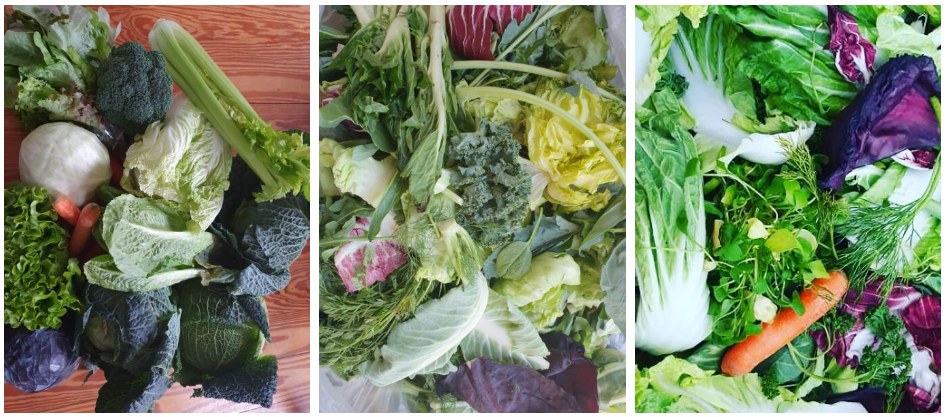
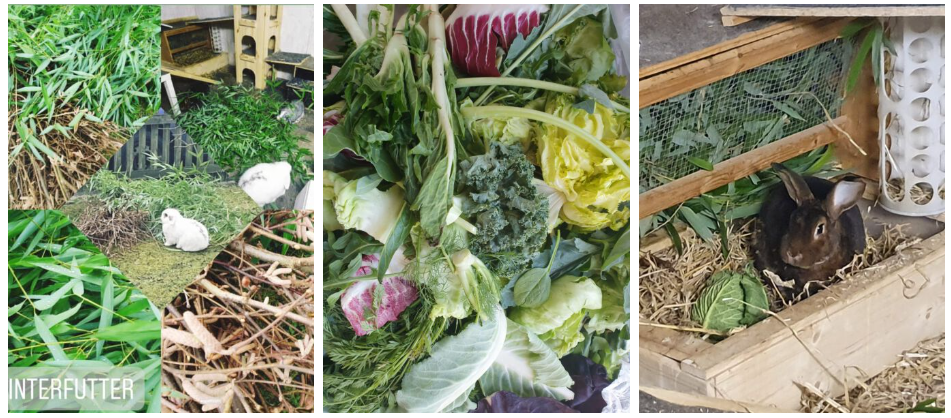
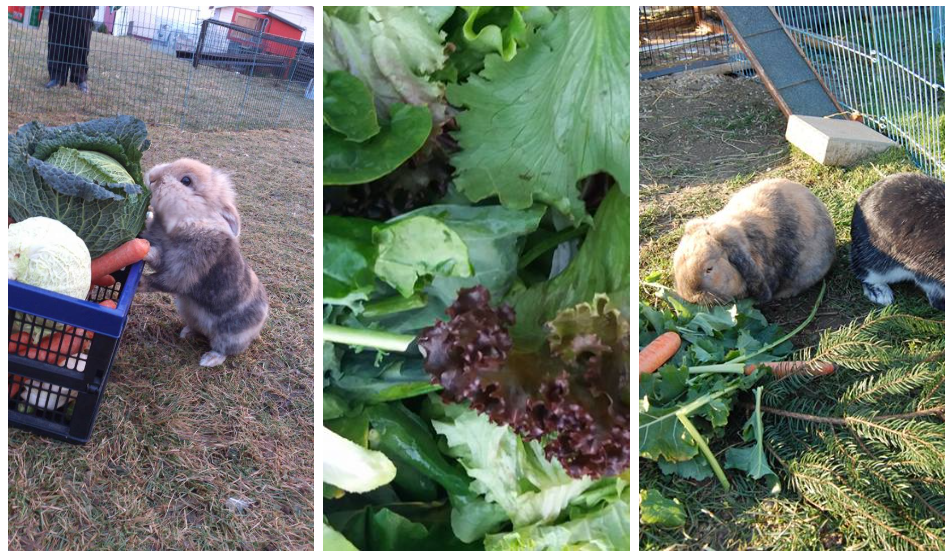
Extremely low temperatures: How many degrees below zero can rabbits tolerate?
Healthy rabbits, kept in a suitable, weather-protected enclosure with at least 6 m² of space, can withstand temperatures down to –20 °C, as long as they live together with at least one other rabbit. For sick, elderly, sensitive animals or kits in the nest, special precautions are necessary, such as providing heating.
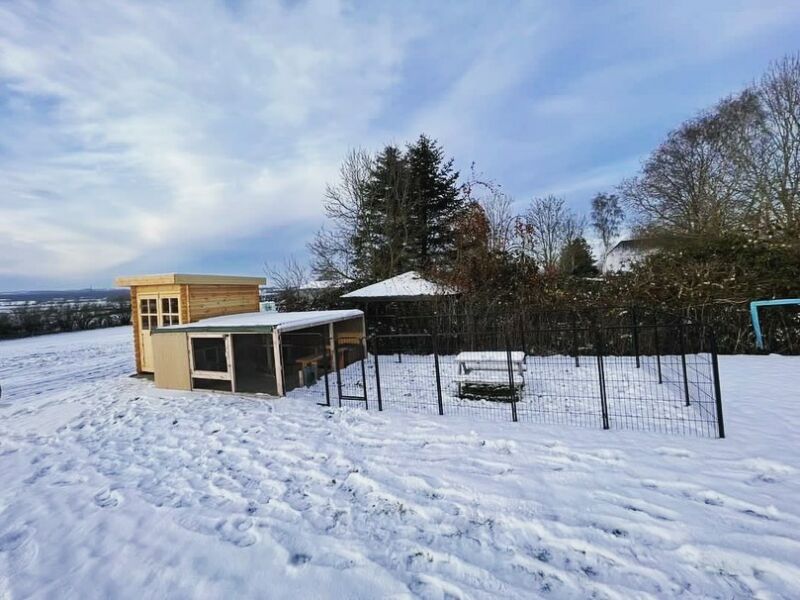
How do I know if my rabbits are cold?
When rabbits try to conserve heat, they huddle together and fluff up their fur, sometimes even letting themselves be covered with snow. If you observe this behavior, it means they are fine: they are retaining body heat instead of losing it to the environment.
However, if rabbits are shivering or remain motionless—for example, if they don’t come to eat or don’t explore the enclosure—it is a clear sign they are cold. In this case, the enclosure must be improved, with better weather protection, enough fresh, energy-rich food, and possibly a heat source.
Can rabbits spend the winter in the garage or basement?
Some people still put their rabbits in a shelter inside a basement or garage during winter. This type of housing violates animal welfare laws! The animals are exposed to toxic gases, lack natural light and a day-night rhythm, cannot move according to their needs, and suffer.
Only in cases of extremely low temperatures or illness may rabbits be temporarily placed in a garage or basement, provided that a space meeting the minimum size requirements is set up. They must stay there only for a few nights and, during the day, have access to the garden or their usual enclosure. In addition, there must be no car exhaust gases present.
Heating the rabbit shelter
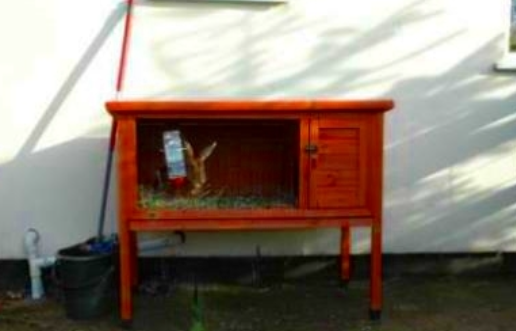
In winter, it’s possible to provide some warmth with a heat source when frost is severe. However, healthy rabbits do not necessarily need artificial heat, since they are not particularly sensitive to the cold.
- A thermal cushion for animals (e.g., Snuggle Safe) can always be offered, even without an electrical connection. It is simply heated in the microwave. Place it well covered within the straw inside the shelter so it retains warmth for longer, even during heavy frost.
- Hot water bottles often keep heat just as long or longer. They must be wrapped in a towel or cover to protect them from bites. Don’t fill them completely—this makes them softer and more comfortable for the rabbits to sit on.
- A heating mat is suitable for enclosures with access to electricity, as it provides continuous warmth without needing to be reheated.
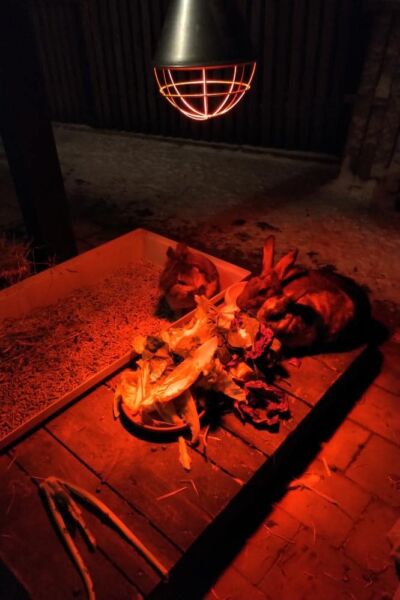
- A heat lamp or infrared lamp (with holder and bulb) can also supply warmth in large shelters or roofed enclosures. If food and water are placed on, under, or near the heat source (depending on the device), they remain frost-free. Rabbits also enjoy sitting near the heat, and many of these devices warm the shelter as well.
- Shelters with heated flooring are another option, keeping food and water from freezing inside. It is always important to follow safety instructions.
- Heating cables can be fixed with aluminum tape, for example under the litter tray or inside a double floor, to warm the shelter.
- Commercially available heat plates for dogs, as well as chick-rearing heat plates, are also suitable. In general, any other safe heat source (radiators, etc.) can be used.
What’s important, however, is that rabbits must always be able to choose whether to stay near the heat source or move away from it. With some devices, it’s crucial to maintain enough distance between the unit, the bedding, and the animals to prevent burns or fire. It’s also essential to ensure that the temperature does not become excessive.
Cables must always be well protected against chewing, for example with a stone slab or cable protectors.
Safety:
- Always respect the floor or bedding distances specified by the manufacturer.
- Use dark emitters or heat lamps with power levels appropriate for the holder.
- Do not place easily flammable material under the lamp.
- Continuous red light can damage the eyes; therefore, dark emitters are preferable.
What to do when water freezes – Supplying water in winter
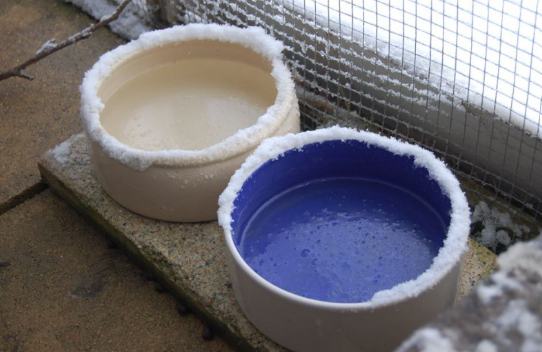
With the first frosts, water freezes regularly. Here are some tips to make water supply easier during winter.
Bottles with a nipple are completely unsuitable for supplying water: they only release drops, rabbits cannot drink properly, and they are unhygienic. In winter there is also the risk of the tongue sticking to the frozen metal and being injured when pulled away.
Some rabbits eat snow in winter to hydrate themselves.
Tips to prevent freezing:
- The best solution is to have three bowls: while one thaws inside the house, another can be used. By the time the third freezes, the first is ready again.
- Heated dog bowls are available on the market, with cables protected by a steel sheath against chewing. If there’s an electrical outlet near the enclosure, these are a great help—especially for people who work—since they ensure fresh water is available all day.
- Electric poultry water heaters can also be used; they are placed under the bowl. The cable must be protected against chewing, for example by routing it outside the enclosure or covering it with a stone.
- Without electricity, a Snuggle Safe thermal cushion can be placed under the bowl. Heated in the microwave (3–8 minutes), it keeps water from freezing overnight.
- Rechargeable hand warmers also work. On the lowest setting they last all night; place them in the shelter, under the straw and the bowl, or inside a larger bowl that holds the water bowl. If you want to keep water unfrozen during the day as well, you’ll need two and use them in rotation.
- If you have a stove, you can heat flat stones and place them under the bowl in shifts, or even put hot stones directly into the water.
- If a heat source for the rabbits is used (see previous section), water can also be placed near it to stay frost-free.
- Offering snow in a bowl in addition to water can be useful: many rabbits eat snow when water is frozen. In heated shelters, water bowls can be placed inside as well.
- Placing two ping-pong balls on the water’s surface: the movement delays freezing during light frost, though this only works in large bowls and when there’s wind to move the balls.
- The larger the water volume, the longer it takes to freeze; therefore, large bowls are ideal.
- Placing the bowl on an insulating base (wood, polystyrene protected with wood against chewing) noticeably slows freezing. On stone or metal surfaces, water freezes much faster.
- Do not fill bowls with inward-curved rims to the top: as water freezes it expands and may break them. Only fill to just below the curve.
- With the “bowl-inside-a-bowl” method, the water in the top container stays unfrozen longer thanks to the hot water in the lower one.
Frost-proof double water bowl
The bottom bowl is filled with hot water…

Homemade electronic heated drinker:
The heating cable is embedded in the surface with concrete, and a bowl is placed on top and filled with water.
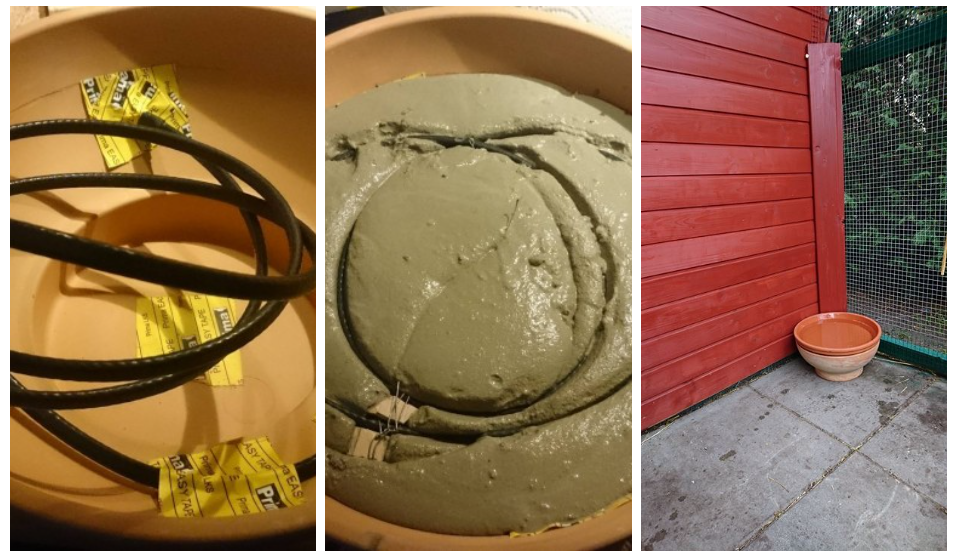
Rabbits love to run and play in the snow…

